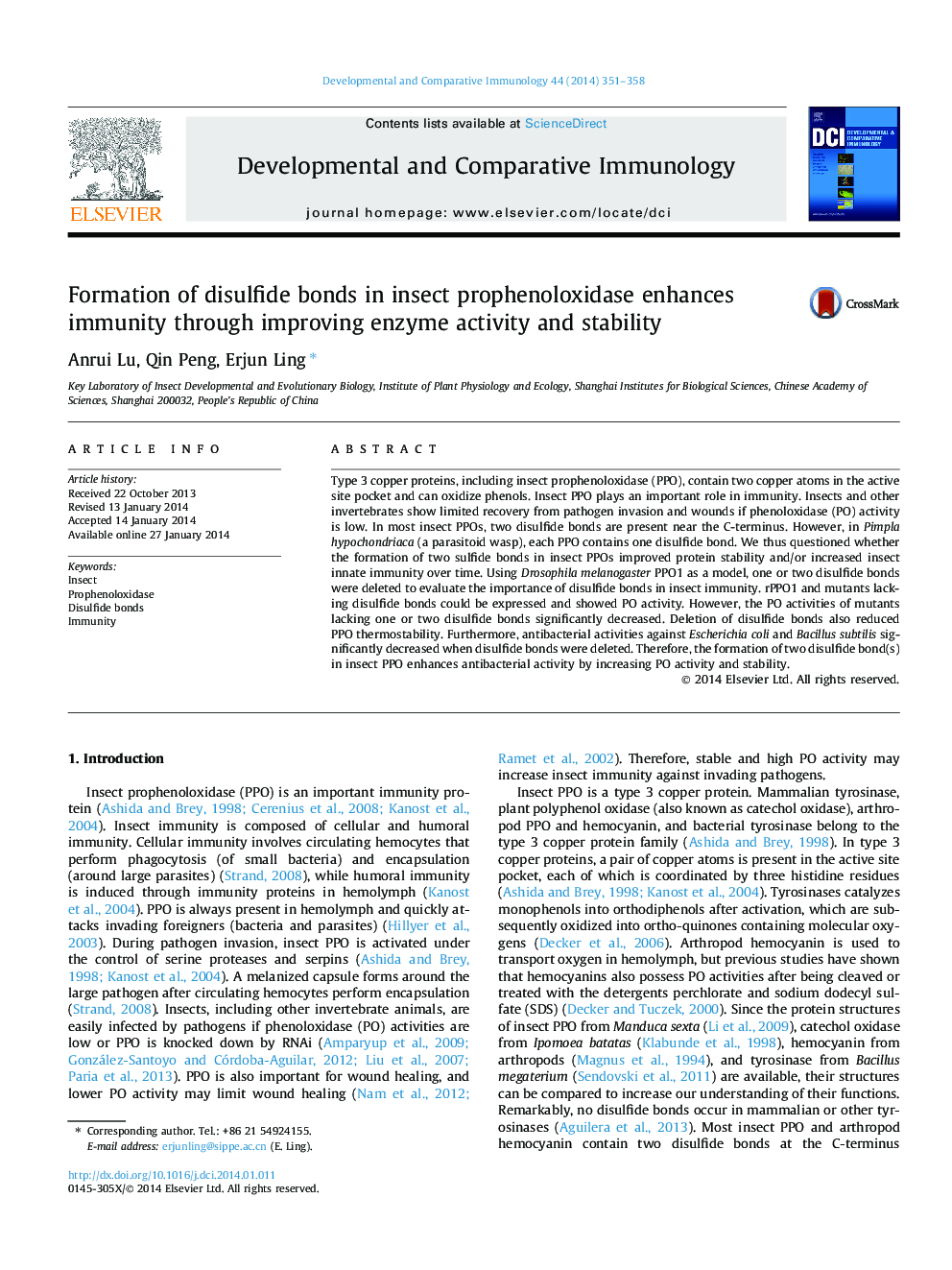| Article ID | Journal | Published Year | Pages | File Type |
|---|---|---|---|---|
| 2429209 | Developmental & Comparative Immunology | 2014 | 8 Pages |
•Two disulfide bonds in insect PPO increase thermostability.•Loss of disulfide bonds decreases PO activities.•The formation of two disulfide bond(s) in insect PPO enhances antibacterial activity.
Type 3 copper proteins, including insect prophenoloxidase (PPO), contain two copper atoms in the active site pocket and can oxidize phenols. Insect PPO plays an important role in immunity. Insects and other invertebrates show limited recovery from pathogen invasion and wounds if phenoloxidase (PO) activity is low. In most insect PPOs, two disulfide bonds are present near the C-terminus. However, in Pimpla hypochondriaca (a parasitoid wasp), each PPO contains one disulfide bond. We thus questioned whether the formation of two sulfide bonds in insect PPOs improved protein stability and/or increased insect innate immunity over time. Using Drosophila melanogaster PPO1 as a model, one or two disulfide bonds were deleted to evaluate the importance of disulfide bonds in insect immunity. rPPO1 and mutants lacking disulfide bonds could be expressed and showed PO activity. However, the PO activities of mutants lacking one or two disulfide bonds significantly decreased. Deletion of disulfide bonds also reduced PPO thermostability. Furthermore, antibacterial activities against Escherichia coli and Bacillus subtilis significantly decreased when disulfide bonds were deleted. Therefore, the formation of two disulfide bond(s) in insect PPO enhances antibacterial activity by increasing PO activity and stability.
